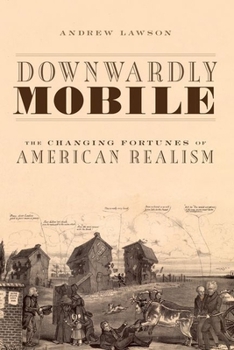Downwardly Mobile: The Changing Fortunes of American Realism
Select Format
Select Condition 
Book Overview
In the unstable economy of the nineteenth-century, few Americans could feel secure. Paper money made values less tangible, while a series of financial manias, panics, and depressions clouded everyday life with uncertainty and risk. In this groundbreaking study, Andrew Lawson traces the origins of American realism to a new structure of feeling: the desire of embattled and aspiring middle class for a more solid and durable reality.
The story begins...
Format:Paperback
Language:English
ISBN:019937502X
ISBN13:9780199375028
Release Date:July 2014
Publisher:Oxford University Press
Length:208 Pages
Weight:0.72 lbs.
Dimensions:0.5" x 6.1" x 9.2"
Customer Reviews
0 rating





